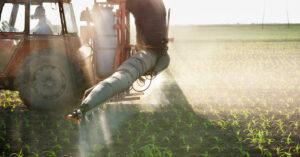Fertigation is a technique that allows the distribution of fertilizers in the soil together with irrigation water. Such technique uses different irrigation systems, but, for a better distribution of the product, a localized or sub-irrigation is preferred.
What are the benefits of fertigation?
In general, a correct and rational management of fertigation leads to an improvement of yields, compared to the traditional fertilization. For example, yields can improve up to 15-30% for tomatoes, compared to the traditional fertilization with sprinkling irrigation.
The main benefits of fertigation are:
• better nutrients’ absorption by plants thanks to the mixing of fertilizers and water;
• more efficient use of water, with no waste;
• optimization of manpower for all fertilizing operations;
• soil less wrecked by agricultural machines during cultivation operations and fertilizations allowed even when the crops are not accessible to farm equipment;
• better fertilizers’ application and absence of nutrients and water’s loss;
• absence of dust dispersion in the air during fertilizers’ distribution.
What you need to know about fertigation.
In order to achieve a correct fertigation, it is essential to know that this can only be applied to irrigated crops, through an irrigation system technologically more advanced than the traditional ones.
Moreover, it is important being aware of different features, such as soil fertility, chemical properties of water, climatic data, nutritional and mineral needs of crops, as well as its water needs and the assimilation timing of various nutrients during the vegetative phases of each crop.
Differences with traditional fertilization.
Fertigation is significantly different from traditional fertilization. The latter, in fact, is fractionated, with a distribution throughout long timeing cycles. Not only: it is superficial and inaccurate and, to ensure a deep penetration of fertilizer into the soil, a certain degree of humidity is necessary.
In addition, if fertilizers are not evenly distributed into the soil, some accumulations or reactions between different substances can occur, with consequent harmful effects for the crops.
Fertigation, instead, allows a uniform, constant and gradual distribution of the product, which easily reaches the roots by dissolving itself in water.
Not only: it is an accurate technique, remote programmable with automation systems from mobile devices, to be monitored with special probes into the soil controlling water and chemical needs of plants.
Fertigation: distribution of nutrients in a continuous and discontinuous way.
There are two types of fertigation based on the way to distribute elements: the continuous and the discontinuous methods.
The first one is very simple and permits to increase the distribution of fertilizers along with the augment of irrigation water needs.
In the second method, fertigation is split for each phenological phase, getting periodically the right dosage to be supplied.
Precision fertigation.
Precision fertigation is based on an accurate daily dosage of nutrients during clearly fixed times, with planned cycles, thus maximizing yields, reducing costs both of manpower and of equipment, and protecting crops from contaminations.
Check out the range of Hydro Fert fertigation products, click here.





